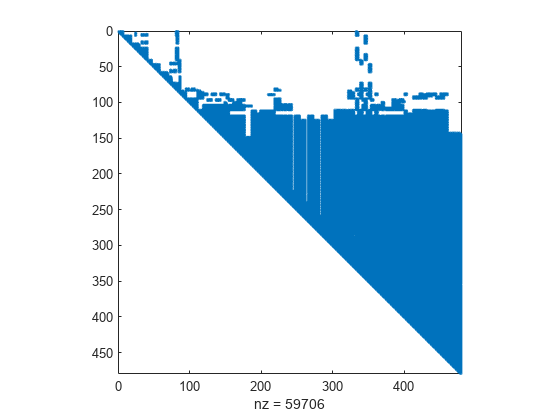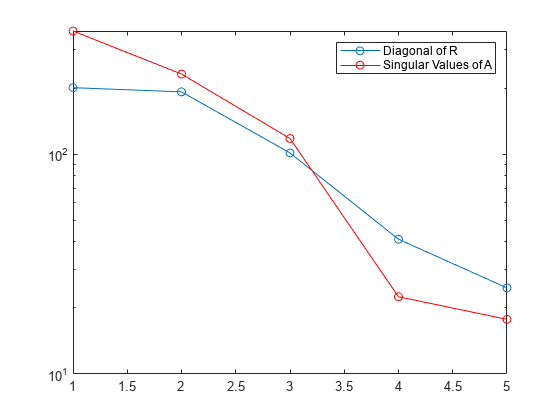qr
QR decomposition
Syntax
Description
[___] = qr( produces an
economy-size decomposition using any of the previous output argument combinations. The
size of the outputs depends on the size of A,"econ")m-by-n
matrix A:
If
m > n, thenqrcomputes only the firstncolumns ofQand the firstnrows ofR.If
m <= n, then the economy-size decomposition is the same as the regular decomposition.
[
specifies whether to return the permutation information Q,R,P] = qr(A,outputForm)P as a matrix
or a vector. For example, if outputForm is "vector",
then A(:,P) = Q*R. The default value of outputForm
is "matrix" such that A*P = Q*R.
[___] = qr( is equivalent to
A,0)qr(A,"econ","vector"). The use of this syntax is not recommended. Use
the "econ" option instead.
[___] = qr(
produces an economy-size decomposition using any of the previous output argument
combinations. The size of the outputs depends on the size of
S,B,"econ")m-by-n sparse matrix S:
If
m > n, thenqrcomputes only the firstnrows ofCandR.If
m <= n, then the economy-size decomposition is the same as the regular decomposition.
[
specifies whether to return the permutation information C,R,P] = qr(S,B,outputForm)P as a matrix
or vector. For example, if outputForm is "vector",
then the least-squares solution to S*X = B is X(P,:) =
R\C. The default value of outputForm is
"matrix" such that the least-squares solution to S*X =
B is X = P*(R\C).
Examples
Input Arguments
Output Arguments
Tips
To solve multiple linear systems involving the same coefficient matrix, use
decompositionobjects.For the syntax
[C,R] = qr(S,B), the value ofX = R\Cis a least-squares solution toS*X = Bonly whenSdoes not have low rank.
References
[1] Anderson, E., ed. LAPACK Users’ Guide. 3rd ed. Software, Environments, Tools. Philadelphia: Society for Industrial and Applied Mathematics, 1999. https://doi.org/10.1137/1.9780898719604.
[2] Davis, Timothy A. “Algorithm 915, SuiteSparseQR: Multifrontal Multithreaded Rank-Revealing Sparse QR Factorization.” ACM Transactions on Mathematical Software 38, no. 1 (November 2011): 1–22. https://doi.org/10.1145/2049662.2049670.
Extended Capabilities
Version History
Introduced before R2006aSee Also
lu | chol | null | orth | qrdelete | qrinsert | qrupdate | decomposition | lsqminnorm | rank


